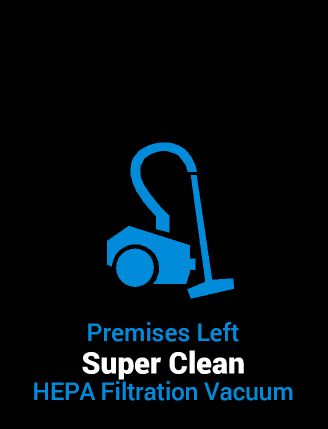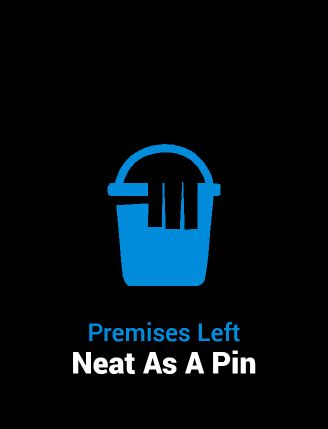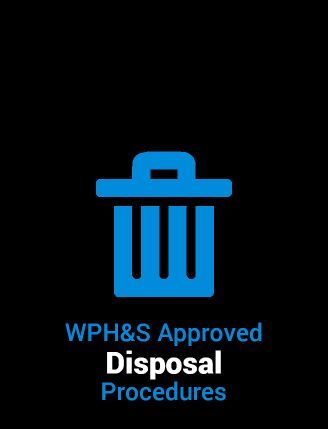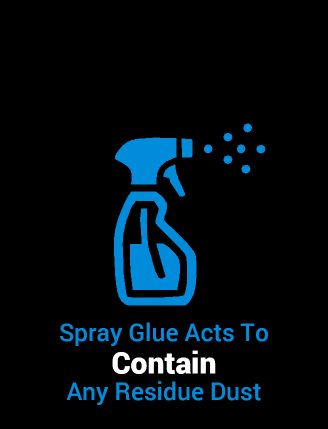The inhalation of asbestos fibres has been proven to cause asbestosis, a respiratory lung disease, as well as lung cancer and abdominal cancer and has been linked to others.
Bonded asbestos will not generally pose a risk unless it is broken and fibres are released into the air. Like other building materials, bonded asbestos can usually only be broken by impact or force, whether it be intentional demolition, or accidental.
Asbestos that is exposed to the elements (eg external sheeting or fences) is consequently at risk of erosion and is therefore a higher danger than internal sheeting.
Friable asbestos is highly dangerous as it crumbles very easily. Friable asbestos should not be touched or approached under any circumstances.
Our crews take the highest possible safety precautions to ensure the safety of the work site. The affected area is fully isolated prior to the start of works, and the area is fully decontaminated before the containment is disassembled. The crew is required to wear full-body protective equipment at all times to ensure their personal safety. No unauthorised person is allowed on site at any time.
The procedure of removing asbestos is quite different to regular demolition. All asbestos sheeting is wrapped and placed in containers (trucks or skip bins) before leaving the affected area to travel immediately to an authorised disposal site. All equipment is either disposed of or fully decontaminated before leaving the work site to ensure that no fibres are unintentionally released. The site will be left in a clear and safe state to enter.
Generally any property that was built prior to or during the 1980’s may have had asbestos materials used in the construction.
If your suspect their maybe asbestos in your building or home please contact a licensed removal company to perform an inspection.
If you are about to purchase a property it is recommended to get an inspection done by a qualified professional before signing a sales contract.
It is not recommended to handle, disturb or attempt to remove asbestos by yourself, it is simply not worth risking your health.
Answer: Yes. We have a Queensland asbestos removal license and all our team have extensive experience in removing and disposal of the material. We also also qualified builders and can easily replace asbestos with a new roof or gutter as required.
Answer: As every property is different it really depends on three main factors. 1. The age and condition of the affected areas. 2. Ease of access to your property. 3. The size of your home or commercial building. In general we can normally give you an approximate price over the phone once we get a few details from you.
Answer: Although we are based in Brisbane, we currently service most of South East Queensland. Areas include Brisbane Northside and Southside, Ipswich, Toowoomba, Sunshine Coast, Gold Coast and Northern New South Wales.
Many factors affect the cost of asbestos removal including ease of access, the condition of the asbestos in question, and the general size and scope of the job. Our residential cost calculators can be useful to establish a ballpark price figure, however the best way to establish the actual cost is an on-site inspection. To arrange a physical inspection, contact us.
For more detailed general information on asbestos, read our asbestos information page.
Unfortunately there are still many smaller backyard style operations that cut corners on asbestos removal. Asbestos is an extremely hazardous material and a single fibre can cause serious health issues to humans and animals. If any dust is left behind after removal it remains just as hazardous to humans and pets as it would be during removal. We follow all of the government regulations for safe removal ensuring asbestos exposure levels remain below safe boundaries during the removal process and, just as importantly, we ensure that no asbestos material is left behind.
You should ask to see copies of all your contractor’s licences and insurances prior to works commencing. Be careful when reviewing these licences as you may be presented with a B-class or non-friable licence. This licence is intended for asbestos removal labourers and can be obtained in two days with no prior experience. You should demand an A-Class supervisor for your job. An A-class is a much more comprehensive licence and can only be obtained after showing at least five years of industry experience and passing a number of exams.
The most important piece of asbestos removal equipment is the H-type HEPA rated asbestos vacuum cleaner. These vacuums are used to decontaminate the work area of all visible and invisible asbestos debris. If they are incorrectly maintained, or have been mistreated during transport/use, the filter can become damaged and lose its efficiency. If this occurs the vacuum could actually be pumping out dangerous asbestos fibres into your home. The only way to ensure this doesn’t happen is to care for the equipment, to have a maintenance program in place, and to ensure all H-type equipment has a current DOP (Dispersed Oil Particulate) testing certification. This is an scientific test which must be undertaken on asbestos removal equipment every year. This is a legal obligation so if your contractor can’t provide this documentation, you should not trust them with your project.
Whilst this won’t affect you directly or play a part in your removal project, it is certainly an indicator on the contractor’s commitment to safety. It is a legal obligation to provide yearly fit testing and an ongoing health surveillance program for its employees, but incredibly, many contractors still don’t provide these services. If your contractor can’t provide these documents you should wonder what other corners they are cutting.
Both air monitoring and clearance inspections are services which must be conducted by a fully independent company. Air monitoring is the measure of airborne/respirable fibres which can be released during asbestos removal works. This is not legally required on every non-friable job but is recommended and should be strongly considered. Talk to your removal contractor and they will assist you in determining if it should be undertaken on your project. A clearance inspection is the inspection of the workplace by an independent asbestos assessor following the asbestos removal works. It will ensure that all asbestos, residue and dust has been correctly removed and that the work area has been adequately decontaminated. Not only is this required to ensure your family has a safe home to return to, it is also a legal obligation. If your removal contractor doesn’t book an independent clearance inspection following the works or tells you it is your responsibility, they should be reported to Workplace Health and Safety Qld Asbestos Information











